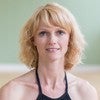Premium Continuing Education workshop
You can view a 2 minute preview. For details, scroll down below the video.
Description
Objectives
- Learn tips and tricks to help clients
- Learn how to put these tips into practice on your own body
- Gather information so you can find an ease with each movement
This workshop was filmed at the 2013 Polestar Life Conference in San Diego, California.About This Video
Continuing Education Credits
If you complete this workshop, you will earn:
3.0 credits from National Pilates Certification Program (NPCP)
The National Pilates Certification Program is accredited by the National Commission for Certifying Agencies (NCCA)
Workshops: Teaching Methodology
Comments
thank you anyway!!
You need to be a subscriber to post a comment.
Please Log In or Create an Account to start your free trial.

























